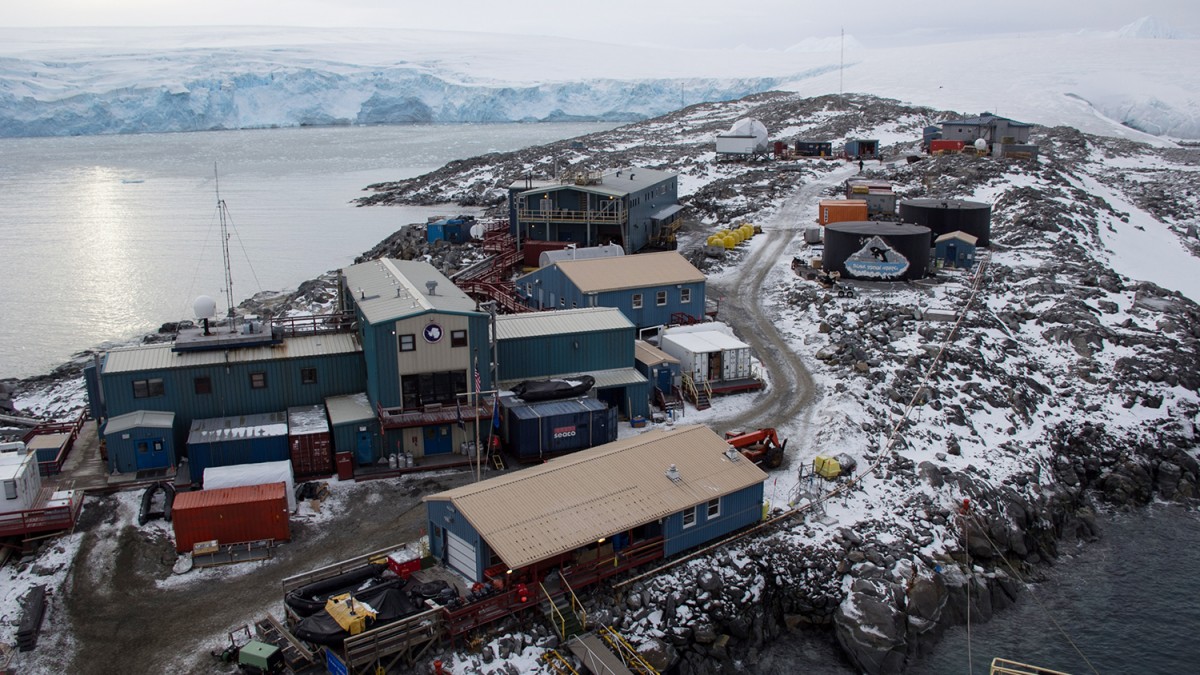
Watch a Skype conversation with Georgia Tech researchers who spent five weeks at Palmer Station, Antarctica. (Photo Courtesy of Georgia Tech Research News.)
An interdisciplinary team of scientists from the School of Civil and Environmental Engineering (CEE), the School of Biology and Johns Hopkins University spent five weeks this spring in Antarctica.
It’s 3:15 p.m. and the sun is setting at Anvers Island. Just off the Antarctic Peninsula, surrounded by 300-foot cliffs of ice, Jeannette Yen pauses outside Palmer Station to watch. The sun spills over the ice cliffs. The frozen landscape melts in a golden glow.
This is one of nature’s great laboratories. Yen and her team of scientists are conducting experiments here that are possible nowhere else. Outfitted in red parkas, they are not here to drill into frozen lakes or fly over thinning ice sheets. They spend what little daylight they have searching for tiny organisms in the frigid waters.
Those tiny ocean-going creatures are called pteropods. The team is studying how the little mollusks propel themselves through the water, which can reveal volumes about ocean acidification and the effects of climate change on the world’s seas.
Yen, a Georgia Tech biology professor, and CEE’s Donald Webster are leading the three-year project with Rajat Mittal from Johns Hopkins. CEE post-doctoral fellow Deepak Adhikari traveled with Yen and Mittal to Palmer Station.
